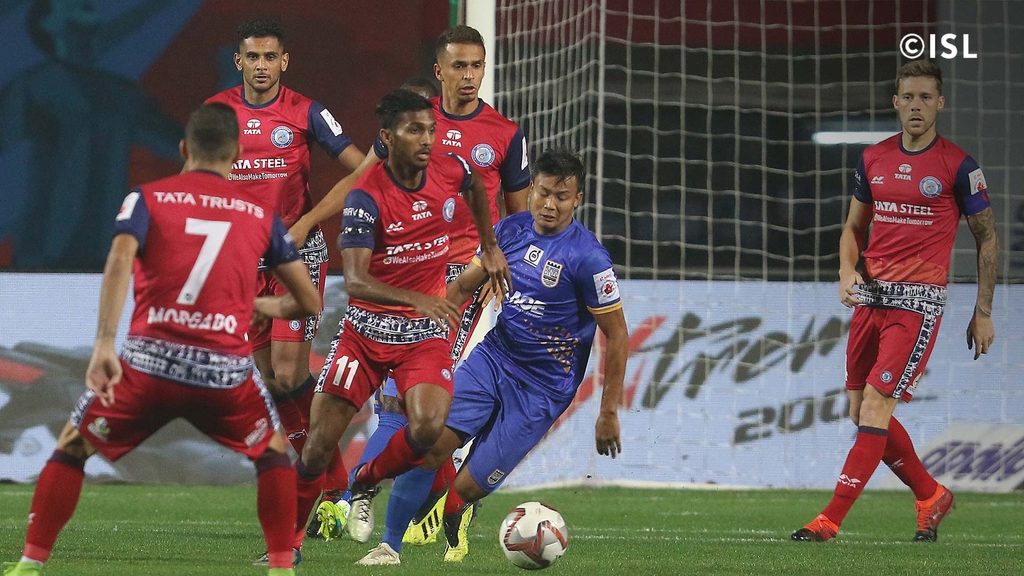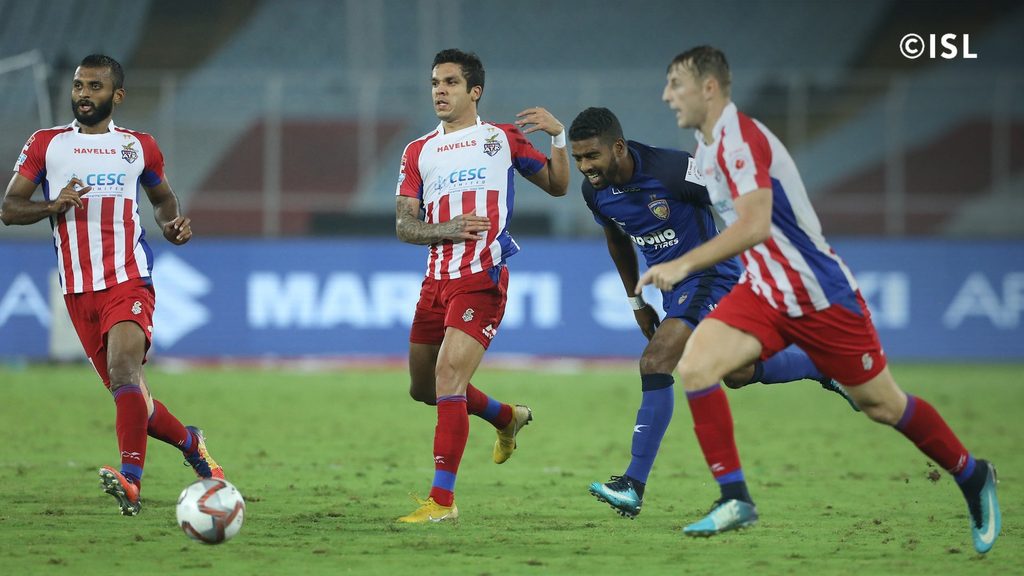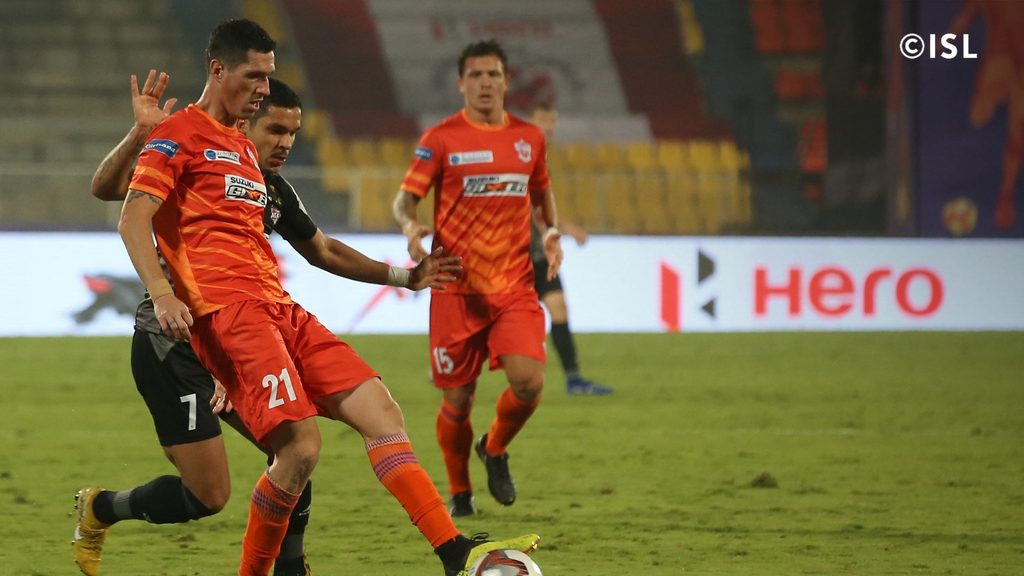What went wrong for the six teams who failed to qualify for the semi-finals
With the league phase done and dusted, the semi-finals of the Hero Indian Super League (Hero ISL) 2018-19 has now taken the centre-stage.

With the league phase done and dusted, the semi-finals of the Hero Indian Super League (Hero ISL) 2018-19 has now taken the centre-stage. The top four teams are engaged in a battle to reach the grand finale and take their shot at the coveted title. But what about the remaining six teams?
Here, we take a brief look at what exactly went wrong with each of the six teams who failed to secure a spot in the semis.
Jamshedpur FC

The Miners were probably the unluckiest from the bunch. Cesar Ferrando’s men lost just three matches all season — the joint-lowest in the league alongside fourth-placed NorthEast United FC. However, their inability to convert chances into goals meant they rarely finished off their opponents. The team lacked the cutting edge up front to convert the one points into three and the shortcomings eventually manifested on the league table as they finished fifth for the second season running. Injuries didn’t help their cause either with Tim Cahill, Sergio Cindoncha and Michael Soosairaj all missing from action at crucial stages of the campaign.
ATK

The two-time Hero ISL champions finished the season in sixth place, five points behind fourth-placed NorthEast. Steve Coppell's men were plagued by recurring injuries, particularly to first-choice strikers, which left them struggling at the top end of the pitch. The series of freak injuries started with Kalu Uche sustaining a muscle injury after a handful of matches, which ruled him out till January. Emiliano Alfaro was brought in from FC Pune City for a stand in for Uche, but he too was sidelined after picking up a knock before even taking the field for ATK. Australian Eli Babalj was brought aboard to fill in but the lack of match fitness stopped him from pinning down a spot in the team. After January, Uche did come back but looked terribly out of touch. The likes of Everton Santos and Balwant Singh, too, failed to step up to address Coppell's goal scoring woes. This had a direct impact on their attack, as they could manage just 18 goals throughout the season. The number is the joint second-lowest in the league along with ninth-placed Kerala Blasters FC. Only bottom placed Chennaiyin FC scored less with 16. With the strikers either misfiring or on the treatment table, too much was put on Manuel Lanzarote, who had to fulfil the dual responsibility of both creating and scoring goals. Edu Garcia's did help the team, but it was a little too late.
FC Pune City

Despite ending the season on a high, the Stallions would jump at the opportunity to turn back the clock and give it another go. Former head coach Miguel Portugal failed to determine his best starting XI as the team got off to a dreadful start to the campaign. With Portugal's departure, the reins were passed on to interim coach Pradyum Reddy. He took a few matches to determine the system which worked and Pune ended the first half of the season with back to back wins before the winter break. Phil Brown took over from January and built on Reddy's work to make Pune one of the most entertaining sides in the league. To put it into context, the Stallions picked up 17 points of their total tally of 22 in only their last eight matches. Barring the late resurgence, the Stallions were really poor in their first 10 outings, particularly at the back. The team conceded 30 goals in the league phase, which is the second-worst defensive record in the league after Chennaiyin. The late-return of veteran Iain Hume from injury meant that the Pune dressing room was without a genuine leader for most of the season, which may have also played a part in their horrible start.
Delhi Dynamos FC

Josep Gombau arrived in the Hero ISL hoping to profit from his experience managing the youth teams of FC Barcelona and his penchant for the beautiful game was evident immediately. His impact, however, was not as immediate as the side failed to win any of their opening 10 matches despite playing an attractive brand of football. Like ATK, the absence of a positive goal scorer haunted the Lions. Delhi were creating a lot of chances but with the lack of a positive striker, the Lions failed to take their chances and were on a nosedive during the early phase of the season.
The team, however, turned a corner in their 11th match of the season with a 3-1 win over Chennaiyin. Once the league restarted after the winter break, the young team started hitting the right notes as the team picked up 11 points from their last six matches. The turnaround was a tad too late for Gombau's squad to make a charge for the final four.
Kerala Blasters FC

The season started well for the Blasters as they picked up a win over ATK in their opening match of the campaign. Four back-to-back draws followed. While the team had started with a five-match unbeaten streak, the obvious chinks in Kerala's armour were evident. With Anas Edathodika missing the initial stages of the campaign due to an injury, the team was leaking goals, particularly in later stages of matches. There was an evident issue up front too as the Blasters' forward line seemed wasteful in front of the goal. The wheels finally came off after their fifth match as the team slumped to five losses and two draws in their next seven fixtures. Former head coach David James' lack of a plan B was evident as the side struggled to offer anything new in order to turn their fortunes around.
With the club parting ways with James, Nelo Vingada took over in January but was seriously handicapped by the departure of senior players Halicharan Narzary and CK Vineeth during the transfer window. The Portuguese, however, brought aboard fresh ideas and the team looked much more organised under him. Vingada tried his best with a depleted squad and also managed to break Kerala's long 13-match winless streak with a 3-0 win over Chennaiyin. The side also showed some glimpses of its true potential in the matches against Bengaluru FC and NorthEast but could only manage draws.
Chennaiyin FC

For last season's Hero ISL champions, it was a horror show throughout the campaign. To provide context, John Gregory's side finished with the league’s worst defensive and attacking records and could only manage nine points from 18 matches. The stats do come as a surprise considering Chennaiyin did retain a majority of the players who were part of the title-winning team from last season. The two big changes in the squad was the absence of enigmatic captain Henrique Sereno and midfield destroyer Dhanpal Ganesh. While the former had left the club, Dhanpal was sidelined with a knee injury for the entirety of the season. The lack of Sereno's leadership quality at the heart of the Chennaiyin defence was always going to be hard to emulate and the likes of Mailson Alves, Eli Sabia or Inigo Calderon failed to fill in Sereno's big shoes. In Dhanpal, Chennaiyin missed their midfield engine, exposing the defence a tad too much. Ganesh's absence forced Chennaiyin's most creative midfielder Raphael Augusto to operate from deeper, thereby limiting the Brazilian's impact on matches. The domino effect was felt up front too as chances were far and few. Star striker's Jeje Lalpekhlua’s poor form didn't help the two-time Hero ISL champions' title defence either.

























